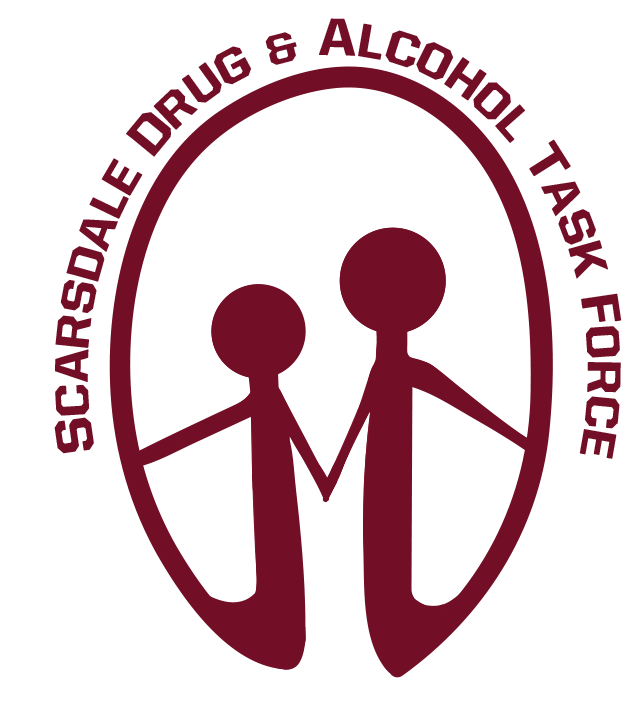A Sobering Look at Marijuana and the Consequences of Youth Driving While Intoxicated
- Tuesday, 09 October 2018 17:04
- Last Updated: Tuesday, 09 October 2018 17:08
- Published: Tuesday, 09 October 2018 17:04
- Lauren Rubino
- Hits: 3474
 At its opening community meeting at Scarsdale High School on Friday, October 5, the Scarsdale Drug and Alcohol Task Force (DATF) featured a special program on the dangers of youth driving while under the influence of marijuana. A community coalition dedicated to preventing youth substance use, the DATF brought in guest speaker Officer Jack Brito of the Westchester County Department of Public Safety, a 12-year veteran of the county police with extensive training in identifying impaired drivers. He shared how to determine if someone is under the influence of marijuana, how law enforcement handles these situations, and what we can do to protect children and other drivers from harm.
At its opening community meeting at Scarsdale High School on Friday, October 5, the Scarsdale Drug and Alcohol Task Force (DATF) featured a special program on the dangers of youth driving while under the influence of marijuana. A community coalition dedicated to preventing youth substance use, the DATF brought in guest speaker Officer Jack Brito of the Westchester County Department of Public Safety, a 12-year veteran of the county police with extensive training in identifying impaired drivers. He shared how to determine if someone is under the influence of marijuana, how law enforcement handles these situations, and what we can do to protect children and other drivers from harm.
“It’s happening in all Westchester communities,” Officer Brito remarked. “I want to help parents get ahead of it and be proactive.” He went on to explain the different forms of marijuana and how the drug is constantly changing. Beyond the leafy green plant that often comes to mind, marijuana now comes in a variety of forms, from foods and beverages to oils and waxes. And since marijuana is not policed in the state of New York, you don’t always know what is in it—there’s no quality control.
“A solvent is mixed with THC to make the oils and waxes,” he explained. “ These solvents can be dangerous substances such as butane and propane.”
The drug is also harder to identify, since many newer forms lack the characteristic marijuana smell. And even the effects are different, so you have to look for more than dilated pupils and stereotypical “pothead” behavior. According to Officer Brito, there are three main strains of marijuana, and each has different effects. The Sativa strain acts as a stimulant and causes users to be hyper, alert, and energetic. Conversely, the Indica strain acts as an antidepressant, leaving users mellow, lethargic, and in some cases, disoriented. The hybrid is a mix of the two, and effects can vary greatly.
When law enforcement pulls someone over, they look for a variety of drug use indicators: red eyes, paraphernalia on the scene (i.e. lighters, rolling papers, and glass pipes), relaxed inhibitions, talkativeness, the inability to divide attention, and an impaired sense of time and distance—which is often evident in car crash situations.
“I start by asking questions and making observations,” Officer Brito explained. “If what I see is just not normal, I’ll have the person exit the car for field sobriety tests.”
Three basic tests are standard for all police departments and help determine whether a person can divide his or her attention and operate a vehicle safely. A person may also be asked to provide a breath sample to rule out alcohol use. In addition, Officer Brito shared that the NYPD is currently piloting a portable drug test that can indicate a positive result in as little as 4-10 minutes. While it is still in the testing phase, this new technology would make it easier for police to identify impaired drivers on the spot.
Once arrested, a minor is usually brought in, processed, and then released to a sober guardian or known adult with a field appearance ticket—sometimes with bail. However, Officer Brito emphasized that what would normally be a misdemeanor can quickly become a felony if another minor is in the car, since he or she is endangering the welfare of a child. In that case, the person would be arraigned and could spend a night or two in jail. Moreover, a DWI can have drastic penalties—a hefty fine, jail time, substantial legal fees, and/or a revoked license for six months or more. It’s also something you can’t hide.
“It follows you,” remarked Officer Brito. “A narcotics charge goes on your criminal record.”
So how can we help youth understand the dangers of driving under the influence of marijuana? There are a variety of ways parents and schools can help, starting with education from expertly trained law enforcement like Officer Brito.
“We start as early as middle school with sixth and seventh graders,” he said in regards to hosting drug safety programs. “My commissioner never says no when I’m asked to speak.” Schools and local organizations can also have DWI driving simulators brought on site so that kids can understand the reality of operating a car under the influence of marijuana. In addition, the Westchester County Police takes part in a prom safety initiative, which includes talking to teens about drugs and what happens if you’re caught driving while intoxicated.
This year, Scarsdale youth and parents will have access to drug safety education thanks to the DATF, which is conducting an informational campaign to educate youth and parents about the dangers of driving high. For more about this initiative and to learn about the Scarsdale Drug and Alcohol Task Force, visit www.scarsdaledatf.com.







